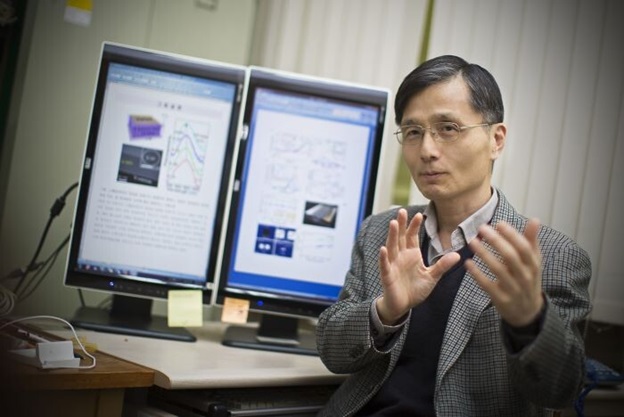Weyl semimetals are a novel class of materials where electrons move with near-zero effective mass and exhibit extreme sensitivity to the strength and direction of magnetic fields. Due to these unique properties, they are considered a next-generation material following graphene, with potential applications in precision magnetic sensors, high-speed electronics, and nanoscale devices. Increasingly, they are being explored for their role in realizing core principles of quantum devices.
Until now, the CPGE—an effect in which the direction of light’s circular polarization induces directional electric currents—had only been observed in three-dimensional Weyl semimetals. That changed with a breakthrough by Emeritus Professor Suk-Ho Choi’s team from the Department of Applied Physics at Kyung Hee University, which successfully proved that the same phenomenon occurs in 2D Weyl semimetals.
The researchers fabricated ultra-thin topological semimetal films—less than 10 nanometers thick—and created a 2D Weyl semimetal. The researchers observed in which direction the current flows when it is reflected in rotating light. As a result, a circular photosensitive mechanism effect in which the current changes depending on the direction of the light was found when the rotating light was illuminated. Furthermore, the electronic structure and physical mechanism in which the effect occurred were also identified.
Unlike bulky 3D materials, 2D Weyl semimetals, due to their ultra-thin and flexible nature, are far better suited for compact, integrated device development. This discovery is expected to advance core technologies such as quantum information processors and spin-based optoelectronic devices, which rely on controlling electron behavior through light. “This is a critical turning point that brings the field of topological materials—touted as the successor to graphene—from pure theory to practical application,” said Professor Choi. “It lays the foundation for high-performance energy conversion and optoelectronic devices and will significantly accelerate the realization of key future technologies like quantum computing.”
The study, supported by the Ministry of Science and ICT and the National Research Foundation of Korea, was conducted in collaboration with Ulsan University, the Australian National University, and the University of Wollongong. The findings were published in the latest issue of the international journal 『Materials Today Physics(IF=10)』.


